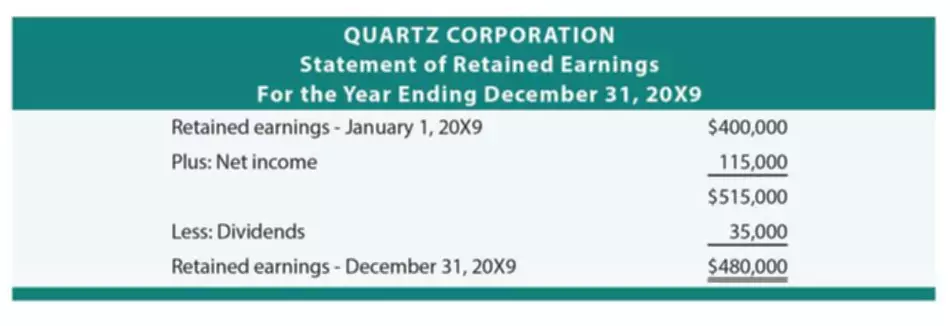Content
- C. Section 174 R&D Expense Capitalization
- Common Misconceptions: 5 Reasons Companies Don’t Think They Qualify
- Traditional method
- Join over 140,000 fellow entrepreneurs who receive expert advice for their small business finances
- Talk to someone who specializes in accounting for the R&D Tax Credit.
- R&D Accounting Under GAAP and IFRS

Companies can benefit from both deducting the research expenditures and by claiming the credit. While the research expenditures are a reduction of taxable income, the R&D tax credit is a general business credit and a dollar-for-dollar reduction of tax. Under recently developed government regulations, more industries qualify than in the past. You may file amended tax returns to obtain refunds of previously paid income taxes, and in some cases, may be able to recapture taxes paid up to four years ago. If a business previously applied for an R&D tax credit under Section 41, there may be questions about the differences between Section 41 and 174 credit.
Does R&D tax credits go onto balance sheet as a credit?
Yes! Even early-stage, pre-revenue startups may use federal R&D credits against their payroll taxes. Don't have payroll set up yet? The credits can also be carried forward as an asset on your balance sheet until you're ready to utilize them.
Her strong focus on the R&D area has resulted in extensive experience with new product development and process improvement. Kendra helps clients identify and understand their R&D opportunities, maximize their R&D credit benefits, and document them to support the credits claimed. Wipfli’s research and development tax credit team helps your business identify tax savings opportunities so you can lower your tax liability and increase your cash flow. Also called the research and experimentation tax credit (or R&E tax credit), this credit is available both at the federal level and in the majority of states. The regular credit is computed by measuring qualified expenses as a percentage of a business’s gross receipts and a higher percentage is applied to qualifying expenses than with the ASC method. The ASC is a less burdensome methodology to compute the research credit.
C. Section 174 R&D Expense Capitalization
Your engagement team will include professionals from a range of backgrounds—such as CPAs, attorneys, enrolled agents, and engineers—who understand your industry and customize our approach to fit your company’s unique needs. Schedule a discovery call today to see how Tri-Merit can help you through the process of assessing and documenting your clients’ research and development activities. Unfortunately, neither GAAP or IFRS provides any real clarification regarding the difference between research and development. It’s on the individual company to define processes and controls to separate the two. Marcum’s New England SALT practice can assist Connecticut based businesses who meet the program’s requirements with MyCTSavings program enrollment. A comprehensive guide to help you prepare business and personal taxes in 2022–2023.
How do you categorize R&D expenses?
R&D may be classified as a capital expense if it is considered necessary for the company to grow or expand its operations. For example, if a company is developing a new product, the research and development costs associated with that product may be classified as a capital expense.
For startups and small businesses, the R&D tax credit can offset alternative minimum taxes or payroll taxes. Businesses with gross receipts of $50 million or less in the last three years can claim the credit against the alternative minimum tax. There are currently two available methods for calculating the federal R&D tax credit. The traditional or “regular,” method relies on a base period of expenses and gross receipts from the mid-1980s which can prove cumbersome to many companies.
Common Misconceptions: 5 Reasons Companies Don’t Think They Qualify
Investment advisory services are offered through Aprio Wealth Management, LLC, an independent Securities and Exchange Commission Registered Investment Advisor. Securities are offered through Purshe Kaplan Sterling (“PKS”) Investments, Inc., member of FINRA/SIPC. Aprio Wealth Management, LLC and Purshe Kaplan Sterling Investments, Inc. are separate and unaffiliated. Information presented is for educational purposes only and does not intend to make an offer or solicitation for the sale or purchase of any securities, and past performance is not indicative of future results.
The TCJA also expanded the availability of the R&D tax credit for certain taxpayers. For corporate taxpayers, it eliminated the Sec. 55 AMT and amended Sec. 38(c)(6) to treat a corporation as having zero tentative minimum tax. These amendments removed a hurdle that previously prevented some corporate taxpayers from using credits under Sec. 41(a), due to the Sec. 38(c) tentative minimum tax limitation.
Traditional method
Receive a preliminary estimate of your potential tax savings from R&D by filling out our complimentary benefits estimate request form. Taxing authorities scrutinize R&D credit and deduction claims because the incentives save taxpayers billions of dollars each year. Tax refunds can exceed 10% of annual R&D costs for federal credits and even higher when applying state-level credits.
These differences will not affect US based businesses performing services in the US because they will be required to follow US GAAP accounting principles. However, the u.s. r&d tax credit accounting treatment will be experiencing accounting for research and development a significant change in 2022. Traditionally, r&d tax treatment allowed businesses to deduct their r&d expenses in the year they were incurred. In tax years beginning after December 31, 2021, this will no longer be allowed.
This ensures that the taxpayer is satisfying the specificity requirement rather than focusing on the substantiation requirement. As the law stands currently, this enhanced documentation requirement will continue for research and development tax credit 2022. The research and development tax credit calculation is done using two different methods. Each method requires the use of a base amount that is used to calculate the credit. The first method is the alternative simplified r&d credit calculation. This methodology uses a base amount that is equal to fifty percent of the average qualified research expenditures (QREs) of the prior 3 years.